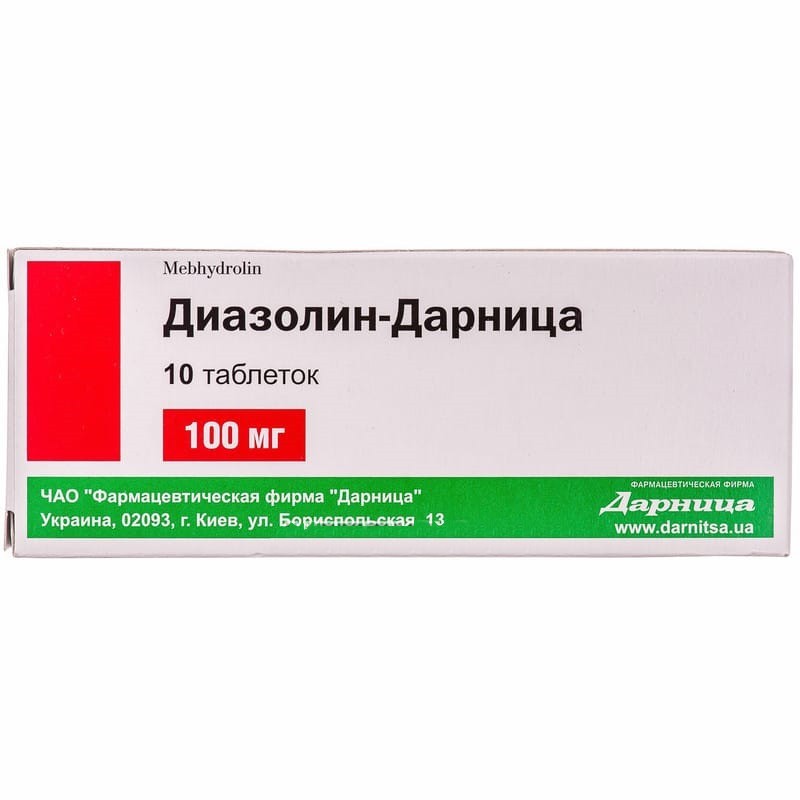



 Secure and encrypted payment processing
Secure and encrypted payment processing We ship to over 40 countries including the USA, UK, Europe, Australia and Japan
We ship to over 40 countries including the USA, UK, Europe, Australia and Japan Guaranteed refund or reship if you haven't received your order
Guaranteed refund or reship if you haven't received your orderthe active substance of the drug - mebhydrolin - refers to antihistamines, is a blocker of hl receptors. weakens the spasmogenic effect of histamine relative to the smooth muscles of the bronchi, intestines, and also affects vascular permeability.
Pharmacokinetics Mebhydrolin is rapidly absorbed in the digestive tract. Bioavailability is 40-60%. The therapeutic effect is achieved after 15-30 minutes, the maximum effect is observed after 1-2 hours. The drug practically does not penetrate the BBB. Metabolized in the liver by methylation. It is excreted from the body by the kidneys.
Prevention and treatment of seasonal allergic rhinitis, hay fever, urticaria, food and drug allergies, dermatoses accompanied by pruritus (eczema, neurodermatitis).
The drug is taken orally after a meal.
For adults and children over the age of 12 years, the drug should be used in a dose of 100-200 mg 1-2 times a day. The maximum single dose is 300 mg, daily - 600 mg.
For children aged 5-12 years, the drug should be used in a dose of 50 mg (½ tablet) 1-3 times a day.
The duration of treatment is determined by the doctor depending on the nature of the disease, the achieved therapeutic effect and tolerability of the drug.
Hypersensitivity to the active substance or other components of the drug, stomach ulcer and duodenal ulcer during the exacerbation period, inflammatory diseases of the digestive tract, pyloric stenosis, prostatic hyperplasia, glaucoma, epilepsy, heart rhythm disturbance.
From the nervous system, psyche and sensory organs: headache, dizziness, paresthesia, increased fatigue, drowsiness, blurred visual perception, slowed reaction rate, tremor, irritability, anxiety (at night).
From the digestive tract: dry mouth, dyspeptic symptoms (heartburn, nausea, pain in the epigastric region), irritation of the mucous membrane of the digestive tract.
From the immune system, skin and subcutaneous tissue: hypersensitivity reactions, itching, rash, urticaria, Quinckes edema.
From the urinary system: impaired urination.
From the blood system and lymphatic system: granulocytopenia, agranulocytosis.
In children, sometimes paradoxical reactions occur: increased arousal, tremor, sleep disturbance.
During the use of the drug, it is not recommended to drink alcoholic beverages and use medicines containing ethanol.
Use the drug with caution in patients with severe hepatic and / or renal failure (dose adjustment and an increase in the intervals between doses may be required).
The drug contains lactose, therefore, patients with rare hereditary forms of galactose intolerance, lactase deficiency or glucose-galactose malabsorption syndrome should not use the drug.
Use during pregnancy and lactation. The drug is contraindicated during pregnancy and lactation.
Children. The drug is used in children aged 5 years.
The ability to influence the reaction rate when driving vehicles or working with other mechanisms. During the use of the drug, it is not recommended to drive vehicles or other mechanisms that require concentration and speed of psychomotor reactions.
The drug potentiates the effect of sleeping pills, sedatives and other drugs that inhibit the central nervous system, as well as alcohol.
Symptoms: confusion, drowsiness, impaired coordination of movements, dry mouth.
Treatment: gastric lavage to clean wash water, intake of activated charcoal inside, forced diuresis. Further treatment is symptomatic.
In the original packaging at a temperature not exceeding 25 ° C.